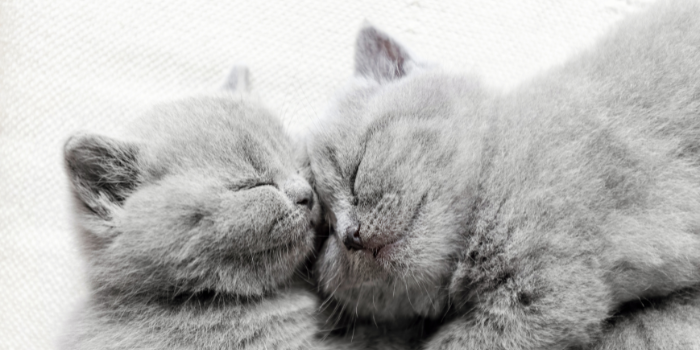Whilst we tend to think of cats as solitary animals, they can demonstrate more social behaviours depending on their local environment and the individual cats involved. Two cats are more likely to form a close bond if they are from the same litter, are a kitten and mother pair, or if they are introduced at an early age.
The benefits of taking on two bonded cats can include:
-
Entertainment and exercise
Cats love having a friend to chase, play and wrestle with. This ready-to-go playmate means they’ll be less likely to get up to destructive mischief around the house (particularly if you work long hours) and less inclined to direct any playful aggression (e.g. ankle stalking) at you!
-
Comfort
The transition to a new home is daunting for any pet, but arriving with a friend or family member will help cats feel more comfortable. Bonded cats will often cuddle and groom each other, which is just plain adorable to watch too!
-
Learning
Cats can help teach each other good manners. Kittens learn about litter box toileting and polite play through observation of and interactions with other cats.
However, before you eagerly sign up for a double dose of feline fun, it’s also important to consider the potential drawbacks of multi-cat households. These can include:
-
Double the bills
As well as food, parasite control and pet insurance costs, consider the financial impact of doubling the costs for your pet’s medical care – this includes routine procedures (such as vaccination, desexing and dentals) and the treatment of any unwellness or injury episodes.
-
The potential for inter cat issues
Cats are naturally territorial and may show aggression towards other feline household members if they feel there is competition over resources. This can manifest as overt fighting, threatening “stare-offs”, resource guarding by one cat, or symptoms of feline stress such as inappropriate toileting or overgrooming behaviours.
Still unsure? For more personalised advice on multi-cat households and behaviour, consult our feline-friendly team!

